Tell me where you live and I'll tell you how much you can gamble
Patricia Martínez Sastre
During the Covid-19 pandemic and unsual image became recurrent on Spanish television: gambling houses wide open in Madrid, while going out to green areas remained forbidden. Distributed along the 21 city districts there are 405 gambling and betting houses, the largest number in Spain.
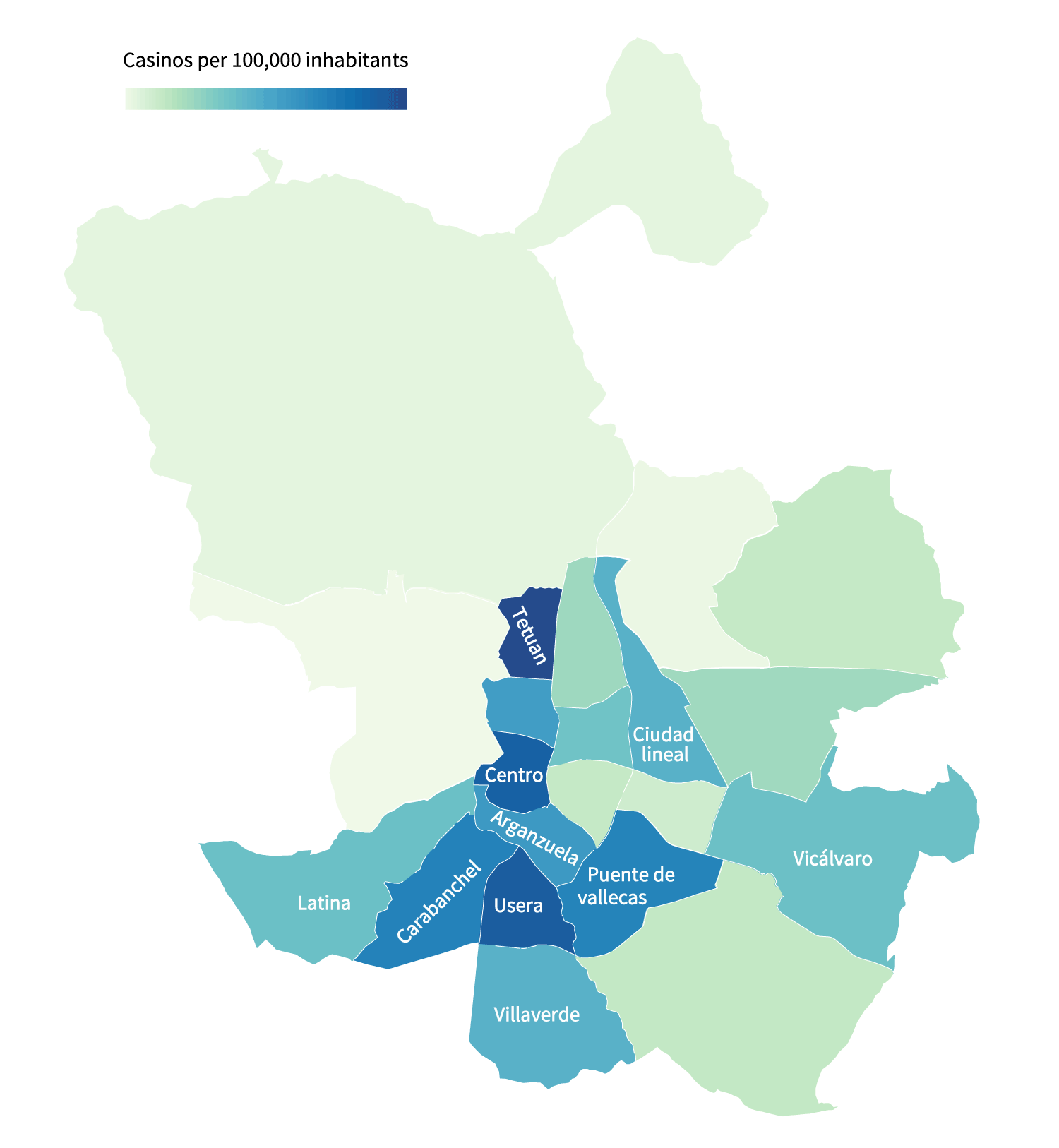
3.3
24.7
3.3
24.7
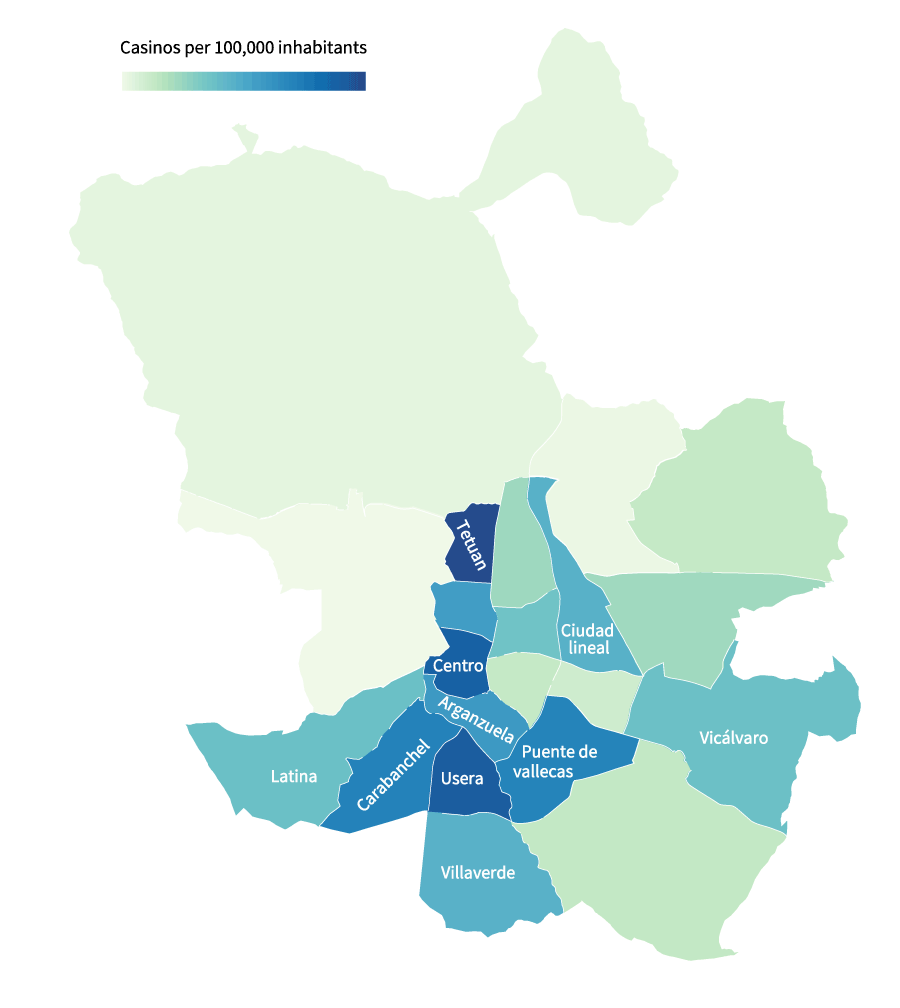
3.3
24.7
3.3
24.7
Gonzalo López Calvo has lived all his life in the district of Tetuán, where since the Gambling Law (2009) was passed the presence of betting shops and gambling centers hasn't stopped growing.
"Where can [casinos] make money?", Calvo wonders. "Only where there is vulnerability", says this member of The Regional Federation of Neighborhood Associations of Madrid (FRAVM), an organization that brings
together hundreds of citizen groups, and opposed the overexposure to casinos on their streets.
"Most of them are situated on commercial streets surrounded by pockets of vulnerable neighborhoods like mine", he says.
The districts of Carabanchel (47), Puente de Vallecas (43), Tetuán (39), Usera (32) and Centro (31) are the ony districts with more than 30 betting shops;
a disproportionate number compared to other dictricts with a similar population.
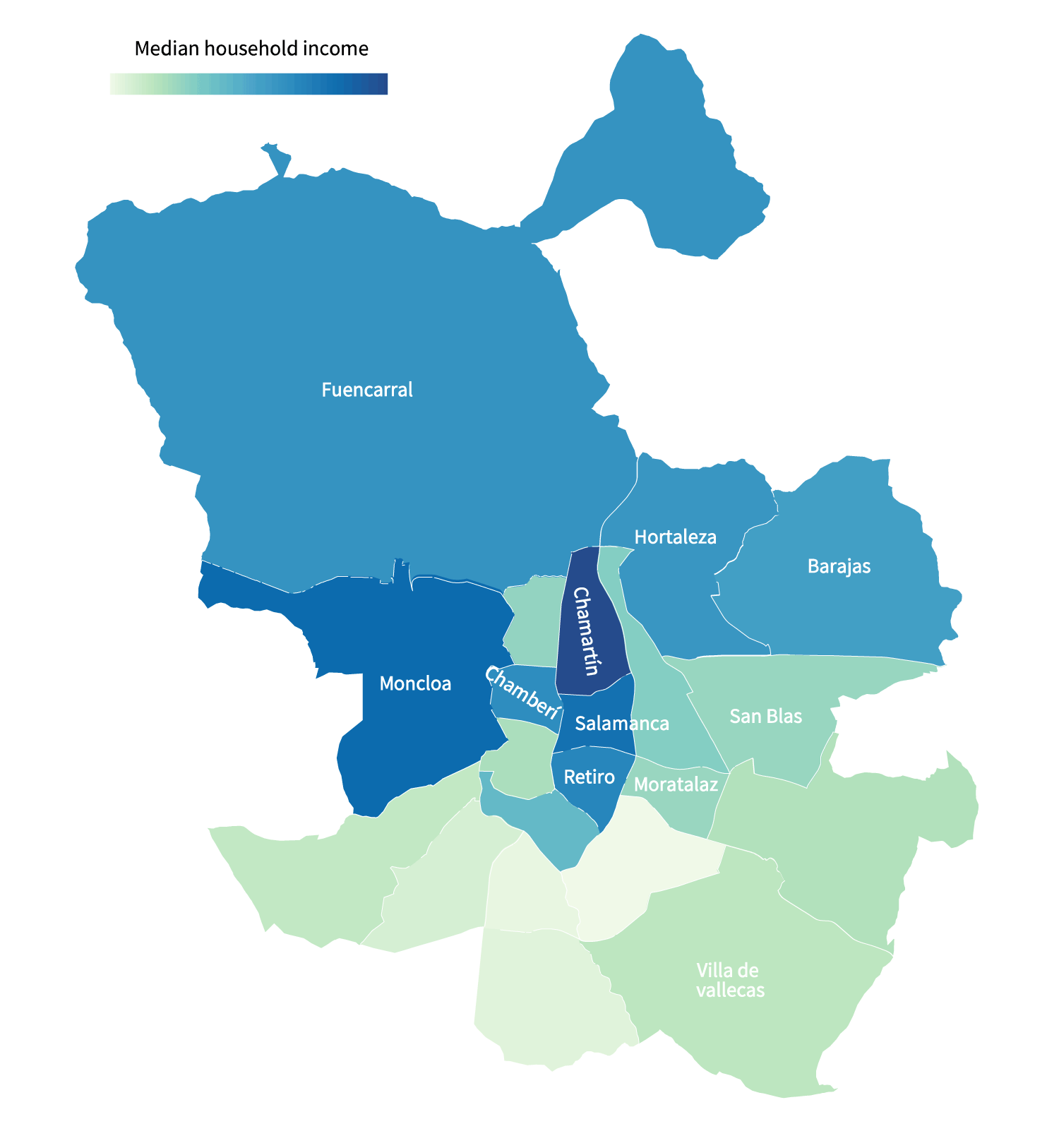
25,500
25,500
66,000€
66,000€
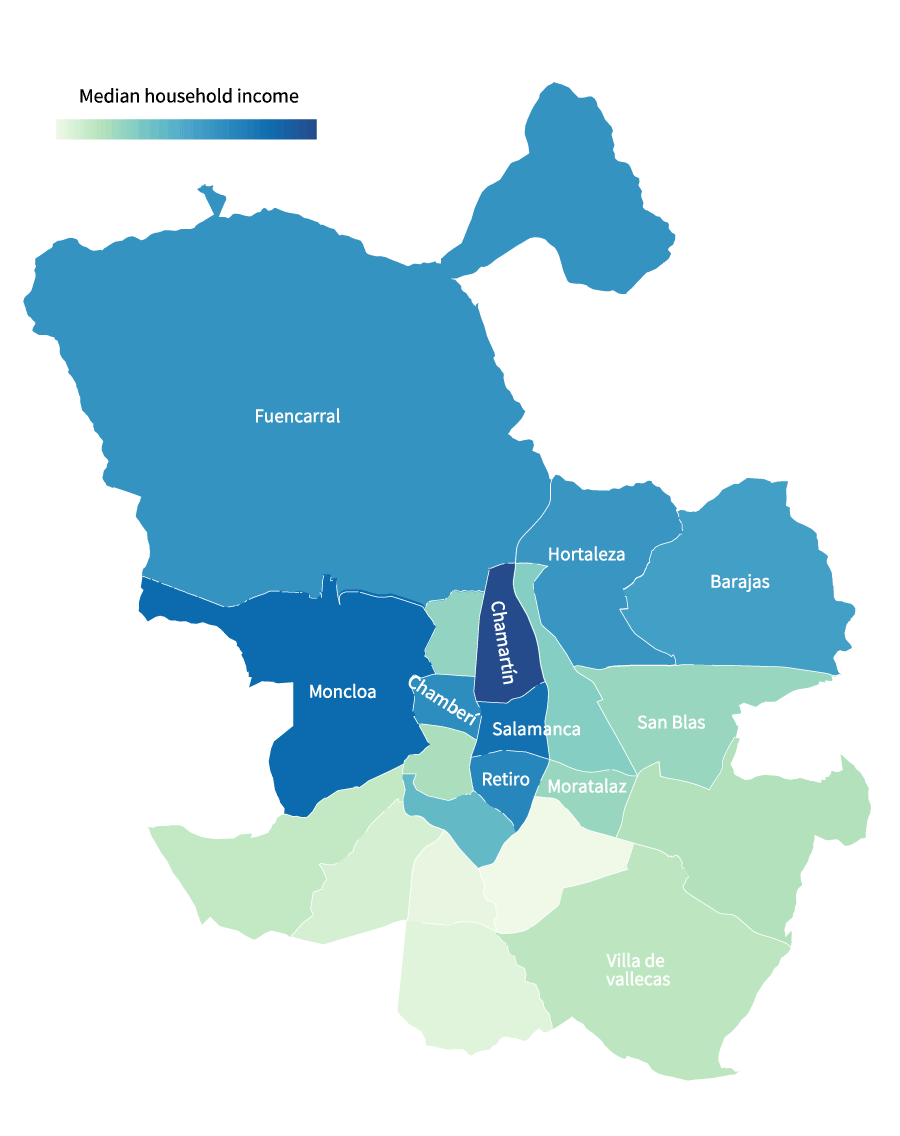
"From the beginning they looked for commercial hubs in lower average income areas, with large migrant populations and where families of eight or nine members live
in 65 squared-meter houses", Calvo adds.
"If that's your reality, betting shops can resemble a paradise", he says.
A linear regression analysis shows a strong correlation between the prevalence of these businesses and the presence of higher migrant communities.
Experts say that this unequal layout has been especially harmful to migrant communities from Ecuador, China, the Philipines and Rumania; the main countries of origin
in some of this more affordable neighborhoods.
Cristina Barrial y Pepe del Amo, enssayists who wrote the book "The lost bet. Gambling, city and resistance (Bellaterra, 2021)", pointed out that many migrants not only see
betting centers as a place to chill -with affordable food and drinks-, but might also feel safer in front of a slot machine than in the street, specially if their status is irregular.
Highly Multicultural Districts Experience More Household Overcrowding
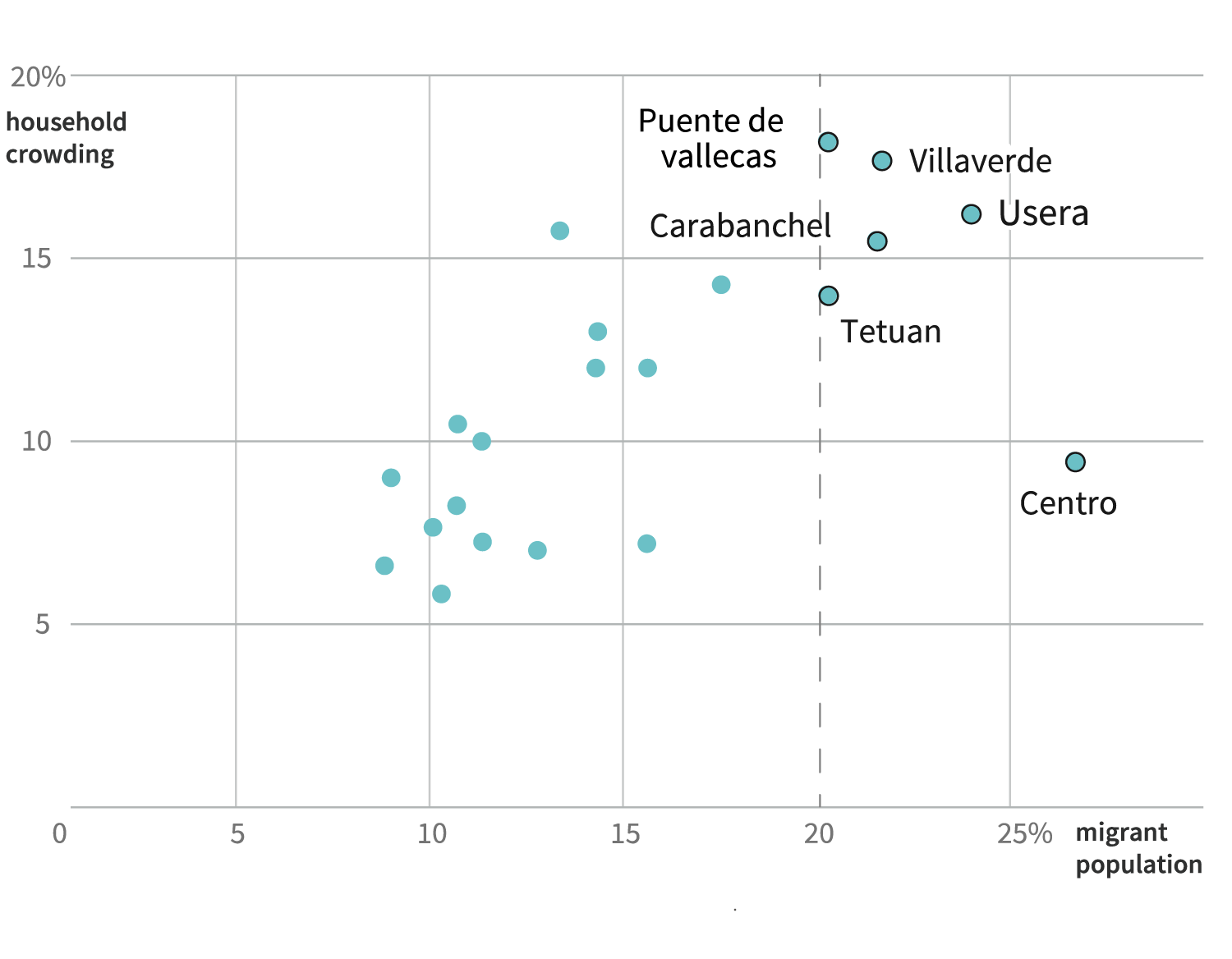
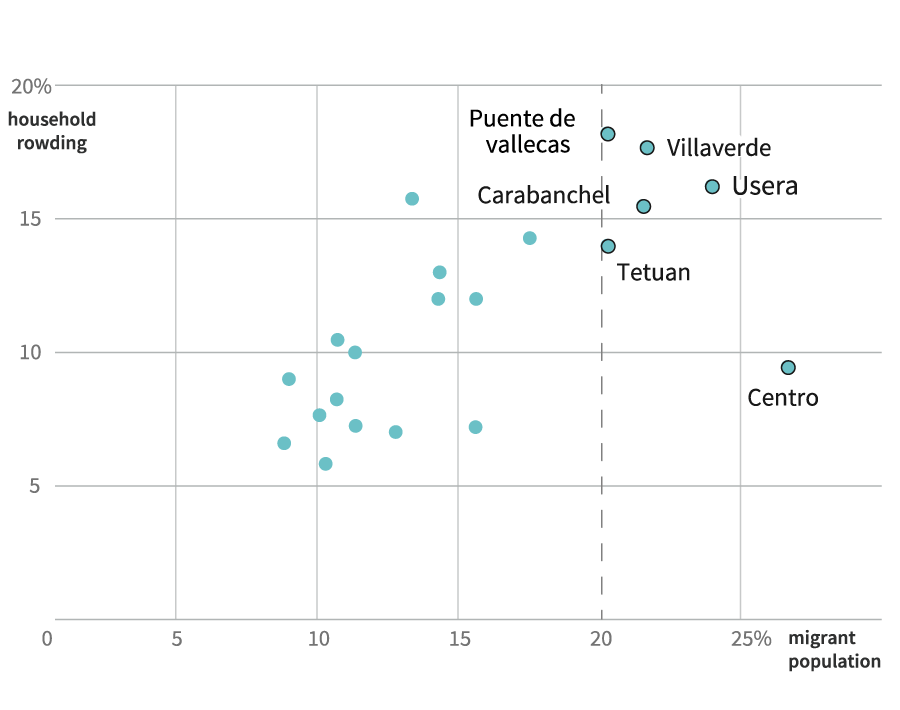
Other factors, according to Calvo, that have an effect on the success of these businesses
are a high incidence of domestic energy poverty and household crowding. Amid those living conditions,
gambling centers can stand out, he says, as "spacious spaces, with big televisions, live sports and central heating".
Three of the five districts where gambling houses are most widespread -Carabanchel, Puente de Vallecas and Usera-
also share the highest percentage of overcrowding, with a peak over 15%.
In districts where the migrant population is significantly smaller -close to 10%-, the percentage of household
overcrowding drops to half, and the number of betting shops falls.